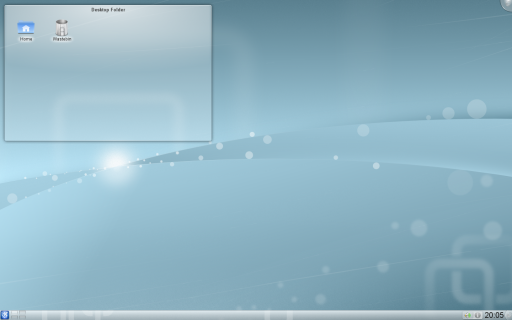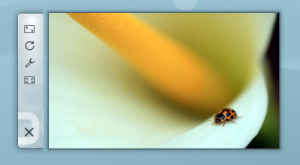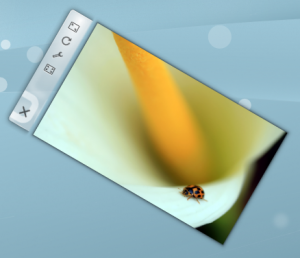Plasma/ca: Difference between revisions
Created page with "Com es relaciona amb l'ús de l'escriptori? Plasma té algunes noves característiques pel que fa als escriptoris tradicionals. Ja hem esmentat les caixes d'eines de Plasma: són..." |
Created page with "=== Vistes de carpeta ===" |
||
| Line 28: | Line 28: | ||
Com es relaciona amb l'ús de l'escriptori? Plasma té algunes noves característiques pel que fa als escriptoris tradicionals. Ja hem esmentat les caixes d'eines de Plasma: són el camí per començar a interactuar i personalitzar l'escriptori Plasma. Fent clic en elles, apareixerà un menú en la pantalla amb una varietat d'opcions: Des d'on podeu afegir estris al vostre plafó o escriptori, amidar, afegir o eliminar plafons, canviar el fons de pantalla i altres operacions. | Com es relaciona amb l'ús de l'escriptori? Plasma té algunes noves característiques pel que fa als escriptoris tradicionals. Ja hem esmentat les caixes d'eines de Plasma: són el camí per començar a interactuar i personalitzar l'escriptori Plasma. Fent clic en elles, apareixerà un menú en la pantalla amb una varietat d'opcions: Des d'on podeu afegir estris al vostre plafó o escriptori, amidar, afegir o eliminar plafons, canviar el fons de pantalla i altres operacions. | ||
=== | === Vistes de carpeta === | ||
As you may notice in the screenshot above, there are no icons placed directly on the desktop. Instead, they are placed inside a container called a "[[Special:myLanguage/Plasma/FolderView|Folder View]]". By default, the Folder View shows the Desktop folder and allows you to drag files to it, open them, cut, copy, paste, rename files and also create new folders/files. | As you may notice in the screenshot above, there are no icons placed directly on the desktop. Instead, they are placed inside a container called a "[[Special:myLanguage/Plasma/FolderView|Folder View]]". By default, the Folder View shows the Desktop folder and allows you to drag files to it, open them, cut, copy, paste, rename files and also create new folders/files. | ||
Revision as of 11:28, 3 March 2011
Una primera vista
Un escriptori Plasma típic té el següent aspecte:

Els quatre components principals d'un escriptori Plasma per omissió són:
- El plafó, a vegades anomenat «la barra de tasques», que proporciona espai per al llançador d'aplicacions, la llista de finestres (programes), el rellotge i la safata del sistema;
- L'escriptori, la zona on estan els estris i les icones;
- La vista de carpeta, un estri que mostra el contingut d'una carpeta a l'ordinador, i que a més proporciona accés ràpid a tasques de gestió de fitxers bàsiques;
- La caixa d'eines de Plasma, es troba a la part superior dreta de la pantalla així com en un extrem del plafó. S'utilitza per accedir a la configuració i altres opcions de forma ràpida i segura.
Tots aquests ítems per omissió són totalment configurables i poden albergar una àmplia varietat d'eines i contingut.
PMF sobre l'escriptori Plasma
Una «PMF -preguntes més freqüents-» per a la versió actual de l'escriptori Plasma es troba en aquesta pàgina. Proporciona respostes breus a preguntes comunes així com enllaços a les preguntes més freqüents de versions anteriors.
Trobeu la vostra pròpia manera d'utilitzar Plasma
Pots usar Plasma de la mateixa manera que usaríeu l'escriptori de qualsevol altre sistema operatiu: Accedint al llançador d'aplicacions, veient els programes actius en la barra de tasques, accedint a les icones en la safata del sistema, i així successivament.
Una part important de Plasma són els «estris». Aquests són unitats individuals de l'escriptori i inclouen (encara que no es limiten a) el menú d'aplicacions, les icones, la safata del sistema, el rellotge, etc. Els estris poden existir en l'escriptori mateix, o es poden ancorar en el plafó, en l'estalvi de pantalla o en el tauler entre altres llocs. Els estris poden servir per a moltes tasques, a més de ser ajudants de l'escriptori, incloent eines per a microbloc (Twitter, identi.ca), conversió d'unitats, calculadora, predicció meteorològica, per a compartir fitxers i molt més. Els plafons i escriptoris també són un tipus especial d'estri, destinats a contenir a altres estris.
Com es relaciona amb l'ús de l'escriptori? Plasma té algunes noves característiques pel que fa als escriptoris tradicionals. Ja hem esmentat les caixes d'eines de Plasma: són el camí per començar a interactuar i personalitzar l'escriptori Plasma. Fent clic en elles, apareixerà un menú en la pantalla amb una varietat d'opcions: Des d'on podeu afegir estris al vostre plafó o escriptori, amidar, afegir o eliminar plafons, canviar el fons de pantalla i altres operacions.
Vistes de carpeta
As you may notice in the screenshot above, there are no icons placed directly on the desktop. Instead, they are placed inside a container called a "Folder View". By default, the Folder View shows the Desktop folder and allows you to drag files to it, open them, cut, copy, paste, rename files and also create new folders/files.
You can have more than one Folder View on the desktop, and they can also be placed in panels. You can set Folder View to show any folder, local or remote, you have access to. Each Folder View can be moved and resized independently to your preference.
Folder View can also be set as the default full-screen desktop background for a more traditional "icons scattered on the desktop" layout. Visit the Folder View page to find out how to do this and much more with Folder View.
Panels

Panels allow you to place widgets around the edges of the screen. These collections of widgets can be configured in various ways, including making them automatically hide when not in use or aligned to certain areas of the screen.
By default, there is one panel at the bottom of the screen, but you can add more panels, move and otherwise configure the default panel and remove panels you no long want. The widgets in all of the panels may also be adjusted to your liking.
For more information on configuring panels in Plasma Desktop and what they are capable of doing for you, visit the Plasma Panels page.
Widgets

Plasma supports widgets written specifically for Plasma (also known as Plasmoids) as well as widgets from other sources such as Google Gadgets, Superkaramba and some Dashboard Widgets from Mac OSX. Additional widgets can easily be found and installed through Get Hot New Stuff.
To see the widgets that are installed on your system and ready to use open the Plasma Widget Explorer by either
- opening the Desktop Toolbox in the upper right corner of the screen and selecting ,
- opening the Panel Toolbox furthest to the right in the Panel and selecting , or
- right clicking on the Desktop and choosing from the context menu.
To place a widget on the Desktop simply drag it from the Wigdet Explorer to the Desktop. To place a widget in the panel first open the Panel Toolbox and from there open the Widget Explorer (click ), locate the widget you wish to add and drag it to the desired position in the Panel.
Widgets that are docked into a panel usually have an Options menu, while those on the desktop have the configuration options within the 'handle', the shaded area which pops up when hovering over the widget. Clicking and holding the mouse on the blank part of the handle will allow you to drag the widget to the desired position.

You have four tools on this handle. The top one is the re-sizer. Click and drag on the tool to resize the widget.
The second tool is a rotate tool. Again, click and hold the tool, while rotating to the desired angle.

The third is the wrench or spanner which allows you to configure that particular widget's settings.
Finally, the fourth tool is the "expanded view" tool and is available only on widgets that support this feature, such as the Picture Frame or Web viewers. When clicked, the Picture Frame widget will, for example, open the currently viewed in an image viewer while the Web Slice widget will open the web page in a full web browser window.
A list of Plasma widgets with their own page can be found here, and some of our favourite widgets are discussed on the Plasma Widgets page
Activities

Use Cases
A user likes web comics so they add their favorite web comics via the comics widget. The user now has a full desktop activity dedicated to their favorite web comics. Now the user is happy with the web comics, but the user now has to go to work, so the user creates a activity with the folder view widgets set to the folders of the projects the user is currently working on. After work the user goes home and works on a side project of writing romance novels. The user always gains inspiration by looking at pictures of the user's significant other. The user now creates a new Activity but now puts pictures frame widgets with pictures of the user's significant other. The user also has a folder view of the romance novel project folder. Now no matter what the user is doing the user has a custom tailored activity to match it.
Go to this blog to read a few tips on using activities.
Widget Layouts and Virtual Desktops
Virtual desktops, the ability to have a separate sets of windows on separate desktops, can tie in with Activities. You can have a different activity on each virtual desktop. In Plasma Desktop 4.4, this can be configured by entering System Settings and navigating to Desktop -> Multiple Desktops, and checking "Different Activity for Each Desktop".
In Plasma Desktop 4.3, You configure this by zooming out and choosing "configure Plasma". Then select "use a different activity on each desktop" and zoom in again.
Hints and Tips
Tweaking Plasma
- Learn how to add a sidebar with clock and news
- Customize your Plasma by mixing multiple Plasma themes
Reloading Plasma
Sometimes you might want to reload Plasma, like right after changing system language so the changes takes effect, or because of a problem with the desktop. To do that, open a terminal and run these commands:
kquitapp plasma-desktop
plasma-desktop
Further information
- The Plasma FAQ's
- Plasma HowTo's - short screencasts
- Glossary
- Some of our favourite plamoids - why not add yours?
- Here's how to install more Plasmas widgets
- Learn the versatility of KRunner
| Back to the Introduction page |

